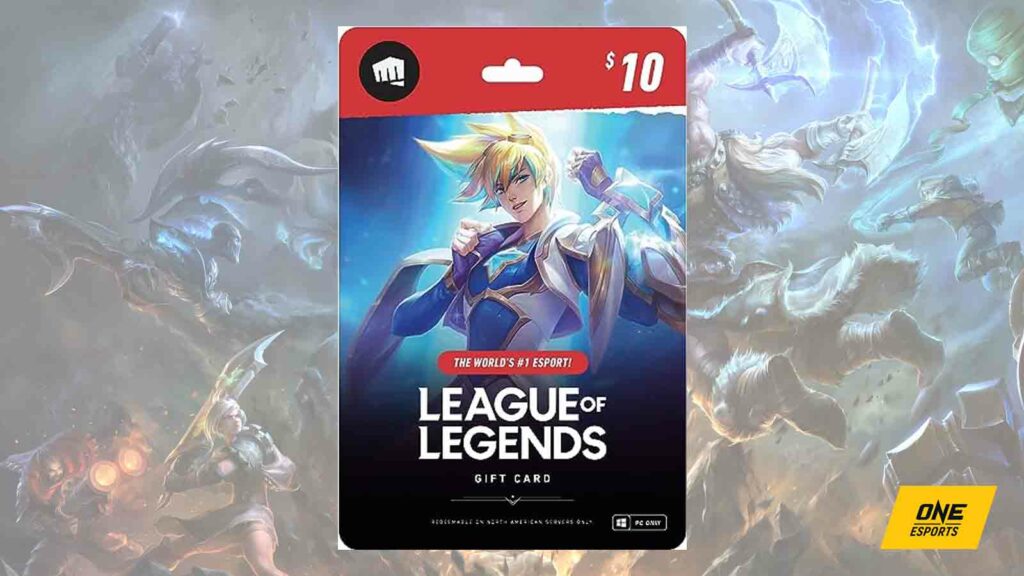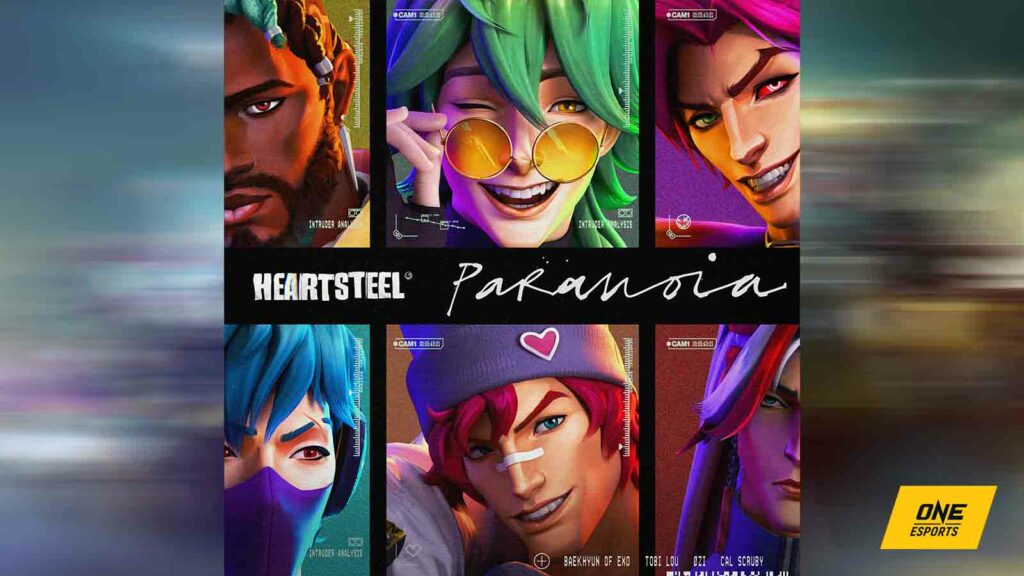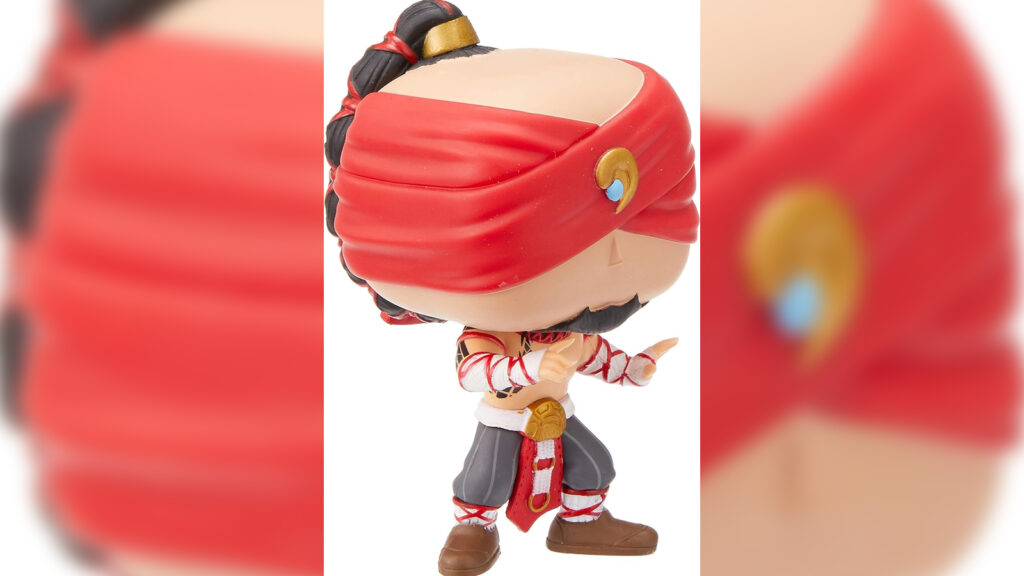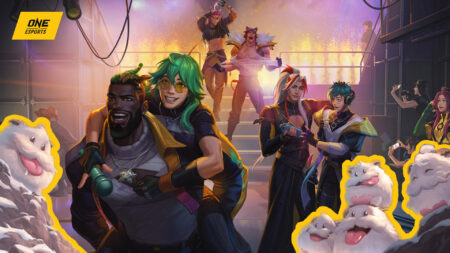The League of Legends universe is vast, extending even into alternate realities that bring forth a plethora of narratives.
Whether it’s the whimsical transformation of champions into bees or the union of students gifted with magical powers trying to save the world, the possibilities for storytelling are truly boundless.
Riot Games’ latest venture outside the Runeterra thematic explores the collaboration between six League of Legends champions, each contributing their unique flair to form the virtual boy group called “Heartsteel.”

MAKE SOMEONE'S DAY: US$10 League of Legends Gift Card for NA server |
The daring ensemble includes Ezreal, K’Sante, Kayn, Sett, Yone, and Aphelios. Heartsteel stands as Riot Games Music’s (RGM) fourth venture into the virtual music scene, following the footsteps of Pentakill, K/DA, and True Damage.
To unravel the creative process of designing these champions in alternate universes, ONE Esports sat down with Stephanie Leung, Riot Games’ Product Lead for LoL Personalization, and Thomas Randby, Lead Concept Artist.
- Hwei abilities explained: League of Legends’ first true human male mage
- New Baron in League of Legends has three forms, new attacks, and even changes terrain
The making of Heartsteel and how Riot Games’ “core champion truths” came into play
In every skin and across various alternate universe themes, Riot Games employees adhere to a foundational guideline known as “core champion truths.”
This confidential document serves as a touchstone for every department and employee involved in designing League of Legends champions.

“Core champion truths is something that we live and die by,” Stephanie told ONE Esports. “When we’re developing a champion, there are essential truths that define them. These truths take precedence in our considerations for every skin created for that champion — it’s the first aspect we review. As we’re thinking about thematic fits and narrative fits, that’s the core.”
The release of Heartsteel marked a meticulous exploration of various elements by the design team.
Factors such as the champions’ roles within the group, the intricacies of the champions’ costumes, and even their personal belongings in this alternate universe were carefully examined, all under the guiding principles of the core champion truths.

“I think it’s a balancing act, because if you don’t stray enough from their personalities and visual pillars, then it feels stale,” Thomas added.
“It doesn’t feel like an exciting, new opportunity to experience the character. But if you divert too far, either it can pose gameplay clarity issues where it just doesn’t look enough like the character, or it can sort of alienate players who are passionate about these characters,” he continued.
Even in seemingly unrelated content like the blooper video of Paranoia, the group’s debut song, and snippets from their Discord meetings, the personalities of all six champions persistently shine through.
“We’re always trying to push the boundaries in terms of how their core champion truths manifest itself,” Stephanie said. “If a champion, for some reason, does not feel like themselves, we have failed in that way.”
These guidelines extend beyond Heartsteel to encompass other LoL champions like Lux and Nami.
Thomas elaborates on this consistency, citing instances where they’ve creatively played with the characters while staying true to their fundamental traits. For example, Lux’s typically sunny disposition is subverted in the Dark Cosmic Lux skin.
“It’s just sort of refracted through a different lens,” he said.
Coven Nami serves as another compelling example of this approach. Nami’s inherent sweetness and bubbly nature remain discernible in the skin line inspired by witchcraft and the occult.
Although termed “core champion truths,” these foundational principles don’t just include League of Legends champions.
The same level of detail is devoted to other creatures in Runeterra, such as Poros, adorable and fluffy creatures native to the Freljord region. A unique style guide is crafted specifically for these petite beings known for their fascination with Poro-Snax.

Initially found roaming Howling Abyss in the ARAM game mode, Poros have transformed over time.
Particularly in Teamfight Tactics, Riot Games’ auto battler title, players encounter Poros of varying sizes, wearing different wardrobes, and showing diverse personalities.
“That’s something that we want to be intentional about — preserving what is so special about the intellectual property and what players love about Runeterra, about the characters that make Runeterra feel alive,” Thomas said.

VIEW PRICE: Funko Pop Games League of Legends Lee Sin |
“It’s really important to us, no matter how we’re translating these characters into alternate universes. Understanding what is so special and magical about the connection that players have to League of Legends and preserving that is our number one priority.”
Follow ONE Esports on Facebook and Twitter for more LoL news, guides, and highlights.
Just a heads up, some of the links on ONE Esports are affiliate links. This means if you click on them and make a purchase, we may earn a small commission at no additional cost to you. It’s a way for us to keep the site running and provide you with valuable content. Thanks for your support!
READ MORE: Exclusive: Riot tells us the real reason why Yone and Aphelios don’t perform in Heartsteel


